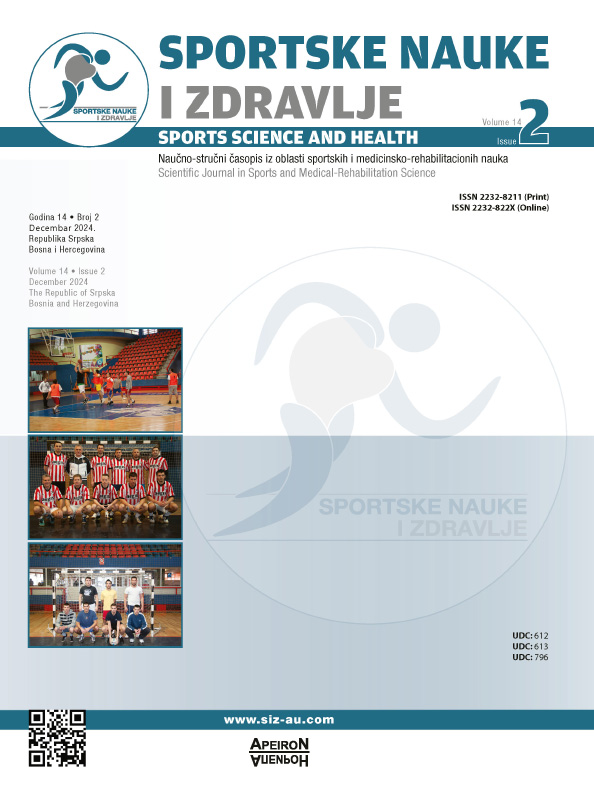Self-Efficacy of Pre-Service Teacher Professional on The Physical Education Learning Process in Inclusive Class: Is It Different from Regular Class?
DOI:
https://doi.org/10.7251/SSH2402158GKeywords:
Self-Efficacy, Pre-Service, Teacher, Physical Education, Inclusive ClassAbstract
Self-efficacy of physical education teachers is critical for maximizing learning in both regular and inclusive classes. The purpose of this study is to determine the difference in pre-service professional students’ levels of self-efficacy for physical education learning in regular and inclusive classes.
This is a comparative study employing a survey method. Purposive random sampling was used in this study. The sample includes pre-service physical education students. The questionnaire was distributed to 120 respondents, but only 62 were willing to complete it. The instrument employs a self-efficacy questionnaire in regular class and a self-efficacy questionnaire in inclusive class. Each questionnaire contains 15 statement items with response options ranging from 1 to 4. Based on the self-efficacy questionnaire in regular class, the Cronbach alpha score of 0.89 indicates that the questionnaire is reliable; in inclusive class, the same questionnaire yields a 0.92 Cronbach alpha value.
The Paired T Test is used to analyze the data, and the resultant sig value is 0.00. This score can be regarded as indicating a significant difference in pre-service students’ self-efficacy in regular class physical education learning versus inclusive class physical education learning. Descriptively, the mean degree of self-efficacy in the regular class is 49.37, while in the inclusive class it is 44.03.
These findings show that compared to regular class, inclusive class have a mean self-efficacy level that is lower. Policymakers may want to take these findings into account when deciding what additional resources to offer pre-service students so they may benefit from inclusive class.
